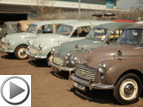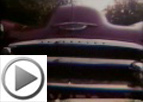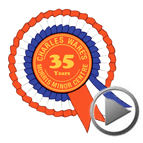London to Peking Rally 2000
VICTOR THOMAS & HUGH MARRIAGE have now returned to Blighty following their epic forty day journey across Europe and Asia
The London to Peking Rally formed the first leg of the Round the World Rally. Victor and Hugh's transport was a 1958 Trafalgar blue, four door Morris Minor, with a few modifications on board designed to last the 15,000km expedition.
 This event saw the return to rallying for Victor, who was an active competitor in his student days back in the early sixties in a Mini Cooper. Co-driver Hugh says that their Morris Minor had had a chequered history and was in bits at the time of completing the entry form. Both living in Berkshire, Victor is Vice president and Regional Director of S.C Johnson & Son whilst Hugh Marriage is Financial Director.
This event saw the return to rallying for Victor, who was an active competitor in his student days back in the early sixties in a Mini Cooper. Co-driver Hugh says that their Morris Minor had had a chequered history and was in bits at the time of completing the entry form. Both living in Berkshire, Victor is Vice president and Regional Director of S.C Johnson & Son whilst Hugh Marriage is Financial Director.
THE CAR
If you have ever wondered what sort of preparations and modifications you can do to your Minor to prepare it for one of the most gruelling journeys it could ever take, then check out these specifications.
Victor and Hugh approached Charles Ware's Morris Minor Centre, asking them to provide a vehicle to be prepared for the London to Peking Rally. They discussed their requirements and examined endless documents relating to specifications and guidelines for entry into the rally. Victor also specified that the vehicle needed to be ready at least six months before the rally for testing.
The engine was fully rebuilt in the Morris Minor Centre's workshop, producing a 1300cc low compression engine that could run on low octane and unleaded petrol. The carburettor was an SU HCF, as fitted to an MG Metro, with a water heated inlet manifold. The Exhaust system was a special stainless steel three branch, as fitted to the Centre's 'Series III' cars.
Halogen headlamps and a new wiring loom were fitted, along with, surprisingly a new dynamo. "The dynamo may seem a surprising choice," said the Centre's Tim Brennan "But we all decided that, if immersed in water, the dynamo would fare better than an alternator. Also if you have an extremely flat battery, you can bump start the car and use the dynamo's output to run the vehicle and charge the battery."
The cooling system included a 'Series III' high capacity radiator with an added header tank.
The gearbox was a standard but fully rebuilt 1098cc box. "We could not use our five-speed systems as this would break the rally rules," said Tim "However the clutch we fitted was a heavy duty 'Series III' item." The differential was a standard 1098 with a 4.22 ratio and the halfshafts were Tuffrided.
"The rear brakes were kept as standard," continues Tim, "but the fronts used our Marina disc brake system, without a servo." A master cylinder top up kit was fitted. All brake lines were run inside the car and made from copper alloy.
A high capacity fuel tank was fitted with a secondary fuel tank. Each tank had its own fuel pump and copper alloy fuel lines, which were run inside the body. Water traps and extra filters were fitted to each line.
"Telescopic shock absorbers were fitted to the front and rear," said Tim. "The rear set-up utilises our latest inboard suspension system that allows much larger tyres to be fitted. Six leaf rear springs were fitted and the ride height was adjusted for optimum ground clearance."
Eight hundred weight van wheels and 165X14 tyres were selected.
In the cockpit, fully adjustable Corbeau bucket seats and four point fixing safety harness were added. The rear seats and rear loading area were removed and modified for maximum space and to keep spares, food and other supplies. A dished Mota Lita steering wheel helped things to go round corners.
Towing eyes were fitted at the front and rear just in case of any 'offs'. The final essential item following appropriate advice was the fitting of a very loud air horn!
The rest of the mechanical specification including things like wheel bearings, handbrake cables and rear wheel cylinders was all new.
With all these modifications the car visually remained the same with only the bonnet vents being different.
THE ROUTE
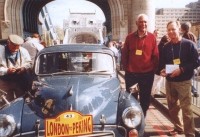 Starting from Tower Bridge on Monday May 1st, the rally crossed the channel heading down across Europe. Day 4 saw the cars arrive in Tuscany, Italy to cross the Adriatic on a specially chartered Superfast ferry to Greece. Then through Turkey to Istanbul, leaving Europe and heading into Asia.
Starting from Tower Bridge on Monday May 1st, the rally crossed the channel heading down across Europe. Day 4 saw the cars arrive in Tuscany, Italy to cross the Adriatic on a specially chartered Superfast ferry to Greece. Then through Turkey to Istanbul, leaving Europe and heading into Asia.
Crossing the Black sea mountains around Zigani before reaching Trabzon, the rally reached the Soviet Union. Batumi is the capital of the 'semi-autonomous' province of the Ajaaraand and the rally had to go through a number of 'border' check points to get into Georgia proper.
Over a forested and attractive lone, low mountain pass and past Stalin's birthplace of Gori, the cars eventually reached the historic GMH 9 (Georgia military highway) which leads over the Caucasus and into Russia.
The route then headed to the Azerbaijan border via the town of Sagarejo. Crossing the border to Azerbaijan the day was spent skirting the towns of Seki and Ansu in the foothills of the Caucasus and river valleys, before moving on to Baku and the ferry across the Caspian.
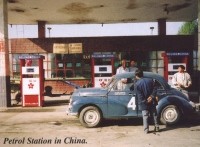 As the rally left Avaza, the cars crossed through low hills before starting on a long day through desert scenery on one of the sections of the Great Silk Road. The route entered the newly independent state of Turkmenistan at Turkmenbashi as well as the Ashgabad, and the Karakum (black sand) desert. Arriving in Bishkek the day started with a one kilometre sprint around a go-cart circuit stretched a little to accommodate the slightly larger cars of the rally.
As the rally left Avaza, the cars crossed through low hills before starting on a long day through desert scenery on one of the sections of the Great Silk Road. The route entered the newly independent state of Turkmenistan at Turkmenbashi as well as the Ashgabad, and the Karakum (black sand) desert. Arriving in Bishkek the day started with a one kilometre sprint around a go-cart circuit stretched a little to accommodate the slightly larger cars of the rally.
Day 24 was a day to remember. An early morning start took in the climb over the snow covered Toragart Pass at 3800m before the descent on superb gravel roads into the border of China and Kashgar.
Following a rest day in Kashgar, the rally took the totally new (tarmac) Fast Desert Highway, which headed across the centre of the Taklimaken. For much of the day the road passed between sand dunes roamed by Bactrian camels. The rout passed in and out of the Gobi desert before arriving at the Jiayuguan, at the western extremity of the Great Wall.
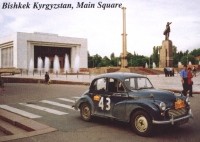 Tuesday 6th June, day 37, was a long day, following the Yellow river valley, first through the characteristic semi-desert landscape of Inner Mongolia, which the rally entered after crossing the Yellow River at Shizuishan. Then a relatively easy drive on motorway below the Daqing Shan range to Hohhot the political capital of Inner Mongolia.
Tuesday 6th June, day 37, was a long day, following the Yellow river valley, first through the characteristic semi-desert landscape of Inner Mongolia, which the rally entered after crossing the Yellow River at Shizuishan. Then a relatively easy drive on motorway below the Daqing Shan range to Hohhot the political capital of Inner Mongolia.
For most of day 39 the road ran through a very broad valley with hills in the distance, until the rally ran close to the Great Wall at Badaling, where the road climbed to cross the range upon which the wall is built. Once through the wall the cars joined a new motorway which led directly into Beijing.
The cars had now driven right across Europe and Asia!
Friday 9th June, day 40, was a well deserved rest day in Peking. CARS UK organised the air lift of the 'Round the World' rally cars to Alaska and preparations were made for the Black Tie 'London to Peking' prizegiving in the evening.
The next day the 'Round the World' entrants prepared for the second leg of their journey. The 'London to Peking' competitors were free to explore Peking and make their preparations for the journey home.
As for Victor and Hugh, after dropping down to 30th place they pulled up to 26th by day 39, eventually finishing a very creditable 10th place in the Classic and Historic Class!
ANDREW BOOTH
(This article was originally published in "Minor Matters" the official MMOC magazine.)
Photographs used by kind permission of Bolide 2000




